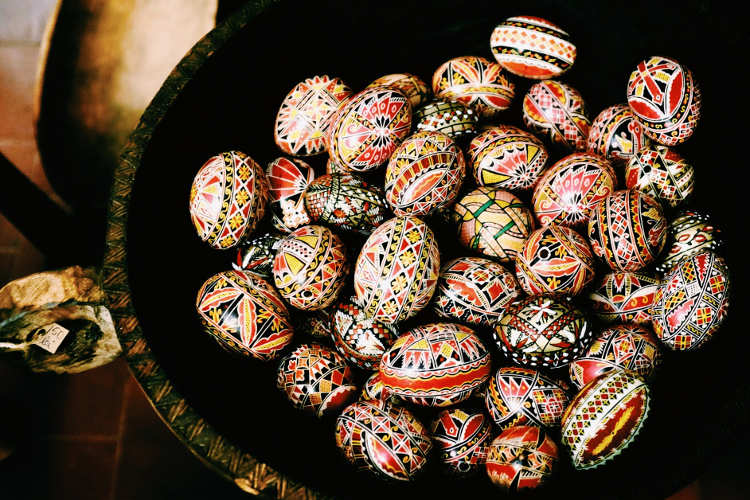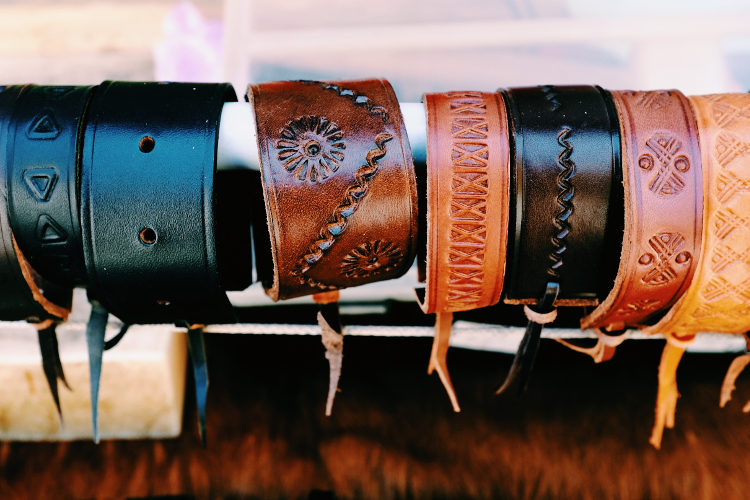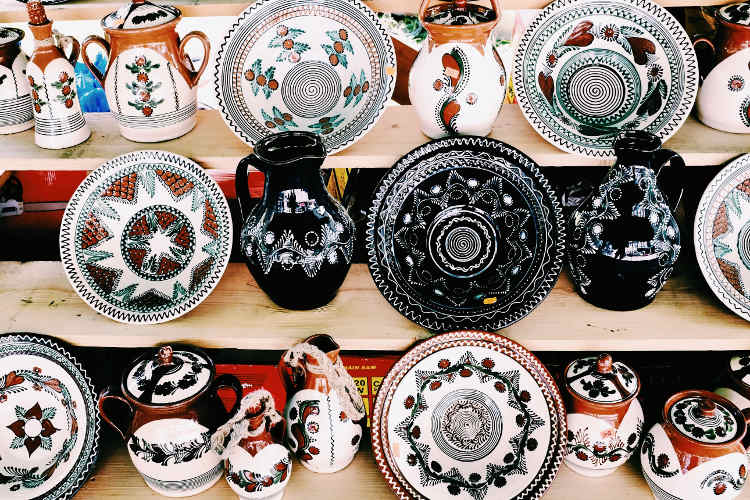Far from fusty, many of the designs on offer feel fresh and modern. You shouldn’t have trouble finding something that appeals, but you may get stumped sorting through the sheer abundance of crafts on offer and – once you’ve set your sights on an article – separating out the fake from the genuine. Not to worry: here are some handy tips for making the right buy in Romania.

Romania has an impressive network of regional folk and ethnographic museums, which are not just pleasant diversions for rainy days or whiling away a few hours but offer crash courses in identifying an area’s best and most authentic handicrafts. The museums are usually located in big cities or provincial capitals, and focus on that region’s particular folk customs. They’re often laid out according to craft – such as woodworking, pottery or textiles – and village, allowing you quick insight and helping identify colours and patterns that appeal.
Some of the best folk museums include the Maramureş Ethnographic Museum in the northwestern city of Sighetu Marmației, with its extensive holdings of traditional carnival masks, carved wooden objects and painted icons; the Ethnographic Museum in Craiova, which focuses on the often-overlooked folk traditions of the southern Oltenia region in Wallachia; and the Ethnographic Museum of Transylvania in Cluj-Napoca.
The tiny Folk Art & Ethnographic Museum in Tulcea is a gem. Occupying just a few rooms, it’s nevertheless a trove of information on the traditional crafts of the ethnically diverse Danube Delta region. Most towns have something similar.
Don’t despair if your travel itinerary doesn’t take you anywhere outside Bucharest. The capital’s excellent Museum of the Romanian Peasant combines thoughtful exhibitions and tongue-in-cheek humour to make an afternoon at the museum actually fun. And its gift shop at the back (no admission charge to the shop itself) is arguably the best place to buy handicrafts in Romania.

Once you’ve decided what folk arts and crafts you might be interested in taking home, it’s time to find a place to shop. At major tourist attractions all around the country you’ll find lines of souvenir stalls, usually perched strategically along the edge of the parking lot to meet incoming tour buses.
While some of these stands are legit (and certainly fine for buying small gifts and cheap trinkets such as snow cones, key chains, T-shirts and Dracula mugs), many are not. A depressing number of ‘traditional’ folk objects, including glass, leather and textiles, these days come from China, and it’s not always easy to distinguish a fake from the genuine article.
Experts say imported items can often be identified by their feel, smell, colour or dye quality, though it takes time to develop real expertise. One handy rule of thumb: if it’s too cheap to be real, it probably isn’t.
Instead, once you’ve eyeballed what’s available at the souvenir stalls, head over to the local folk or ethnographic museum. These usually have small gift stores inside or nearby, where you can shop with reasonable confidence that what you’re buying is the real deal. In addition to Bucharest’s Museum of the Romanian Peasant, mentioned above, other museums with excellent gift shops or craft markets include the Astra Museum of Traditional Folk Civilisation just outside Sibiu, which focuses on traditional Saxon wooden toys, painted icons and ceramics, and the Banat Village Museum near Timişoara, which features the colourful folk costumes of the ethnically mixed Banat region in the west of the country.

A pretty object is, after all, merely an object unless you know some of the history behind it. Where and why an item was made and what importance a particular design, colour or pattern might have are all key details which lend value and significance – and make for a good tale back home.
‘Every object tells a story’, says Mark Tudose, a Romanian expert on regional handicrafts, particularly objects from the area around Sighişoara in Transylvania. ‘Without a story, a vase or a spoon is simply a vase or a spoon’.
Mark and his wife Raluca run two crafts stores, including the highly respected House on the Rock, from within Sighişoara’s atmospheric Citadel. The couple spend much of their time carving traditional wooden spoons, which they sell in the store alongside shelves of painted eggs and colourful plates and vases.
Each of the spoons bears elaborate markings, geometric patterns, animals and symbols which correspond to ancient rites and practices. What might look merely like a snake on a spoon’s handle to the unaided eye, is actually is a symbol of power. A bird might represent fertility or love. Such meanings, associations and legends lie behind many of the best things to buy here, not just the spoons. Before swiping your card or handing over your lei, remember to learn some of your find’s hidden secrets to enrich the experience.